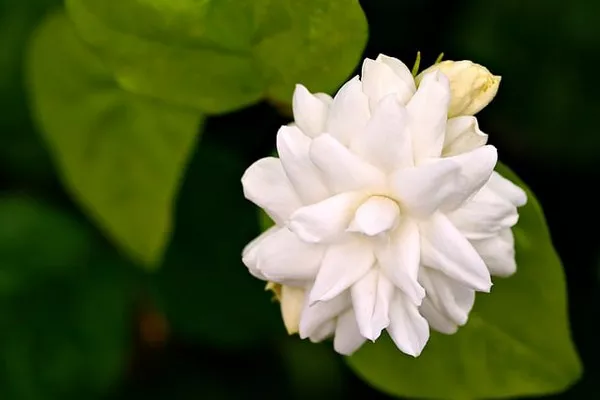Jasmine plants are renowned for their fragrant blossoms, adding a touch of elegance and charm to any garden or indoor space. However, if your jasmine plant has yet to grace you with its beautiful blooms, frustration and confusion may set in. There are several factors that can contribute to a non-flowering jasmine, and understanding these elements is crucial to revitalizing your plant and encouraging the vibrant blooms it’s known for.
Patience is a Virtue:
First and foremost, it’s essential to recognize that jasmine plants, like many flowering species, may require time to establish themselves before producing blooms. Newly planted or young jasmine may take a season or two to settle into their environment and develop the energy reserves needed for flowering. Patience is key, and it’s often advisable to give your jasmine some time before jumping to conclusions.
Lighting Matters:
One of the primary factors influencing a jasmine plant’s flowering capabilities is the amount and quality of light it receives. Jasmine is known to thrive in bright, indirect sunlight. If your plant is not exposed to sufficient light, it may redirect its energy away from flower production. Assess the current lighting conditions and consider relocating your jasmine to a spot where it can receive more sunlight throughout the day. Adequate light is a catalyst for photosynthesis, a process vital for the production of energy and, consequently, flowers.
Temperature and Climate:
Jasmine plants are sensitive to temperature changes, and their flowering patterns are often influenced by the climate in which they are situated. These plants generally prefer warm temperatures and can be particularly finicky about sudden fluctuations. If your jasmine is exposed to extreme temperatures, especially cold drafts, it may respond by delaying or inhibiting flowering. Ensure that your plant is in a stable, warm environment to encourage optimal growth and blooming.
Pruning Practices:
While pruning is a common practice to maintain plant shape and size, excessive or improper pruning can hinder flowering in jasmine plants. Pruning stimulates new growth, but if done excessively or at the wrong time, it may remove potential flowering stems. To encourage blooming, prune your jasmine plant after the flowering season, typically in late winter or early spring, when it is entering an active growth phase. This allows the plant to produce new shoots that can bear flowers in the upcoming season.
Nutrient Deficiency:
Like any other plant, jasmine requires a balanced diet to thrive and produce flowers. Nutrient deficiencies, particularly in essential elements like phosphorus and potassium, can impede flowering. Regularly feed your jasmine with a well-balanced fertilizer during the growing season, typically spring and summer. A fertilizer with a higher phosphorus content is particularly beneficial for promoting flower development. Ensure you follow the recommended application rates to avoid over-fertilizing, which can have adverse effects on the plant.
Soil Quality and Drainage:
The health of the soil in which your jasmine is planted plays a crucial role in its overall well-being. Poor soil quality or inadequate drainage can lead to root stress and impact the plant’s ability to flower. Jasmine plants prefer well-draining, slightly acidic to neutral soil. Amend the soil with organic matter to improve its structure and drainage. Regularly check the moisture levels in the soil, as overly wet or dry conditions can both negatively impact flowering.
Watering Wisely:
Overwatering or underwatering can be detrimental to jasmine plants. These plants prefer consistent moisture, but they do not tolerate waterlogged conditions. Water your jasmine when the top inch of soil feels dry to the touch, and ensure that the excess water can drain freely from the pot or soil. Additionally, be cautious of water quality, as some jasmine varieties are sensitive to high levels of minerals or salts in the water.
Pest and Disease Management:
Pests and diseases can compromise the overall health of a jasmine plant, diverting its energy away from flowering. Regularly inspect your plant for common pests such as aphids, spider mites, or scale insects. Treat any infestations promptly with organic or chemical solutions, depending on your preference. Furthermore, ensure good air circulation around the plant to prevent fungal diseases, which can also affect flower production.
See Also Why Your Rose Plant Isn’t Flowering & How to Restore Its Bloom
Conclusion:
While the absence of blooms on your jasmine plant can be disheartening, understanding the various factors influencing flowering can guide you in troubleshooting and revitalizing your plant. By addressing issues related to light, temperature, pruning, nutrients, soil, water, and pest management, you can create an optimal environment for your jasmine to thrive and reward you with its enchanting blossoms. With patience, care, and a thoughtful approach, you can transform your non-flowering jasmine into a vibrant and flourishing centerpiece in your garden or living space.


